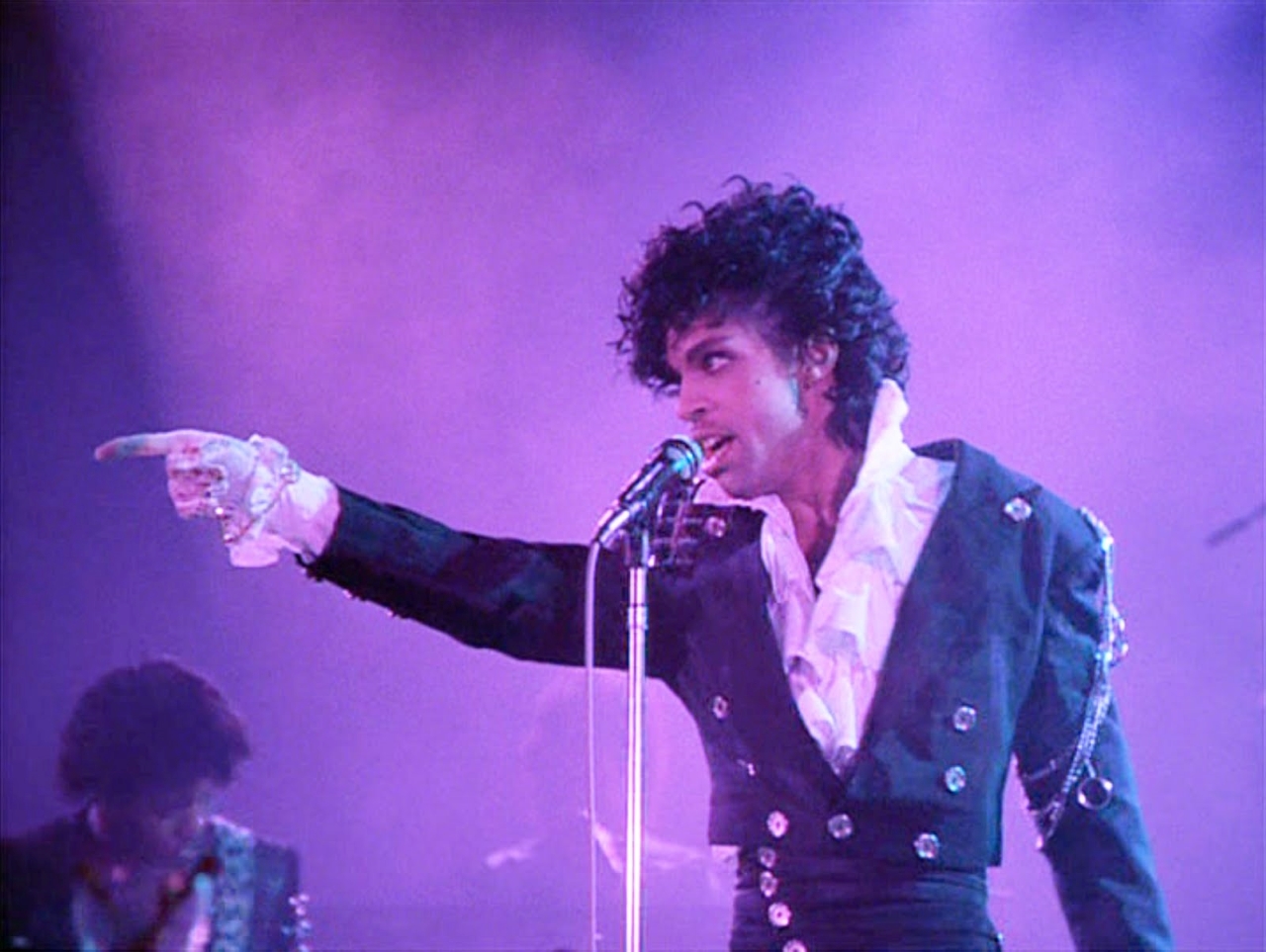👑 The Moment the World Turned Purple
By the summer of 1984, popular music was undergoing a seismic shift. MTV was exploding, rock was fighting to stay relevant, and pop was becoming increasingly cinematic. In the middle of it all stood a 26-year-old Minneapolis prodigy who called himself Prince. With his album Purple Rain, released in June of that year, Prince didn’t just enter the charts—he dominated them. By late August, the record had been sitting at No. 1 for five consecutive weeks, and it was clear to everyone: music had found its new king.

🎸 A Sound That Couldn’t Be Contained
Purple Rain wasn’t merely an album; it was a kaleidoscope of genres blended in ways no one had dared before. Rock guitar solos screamed alongside funk grooves, gospel chords melted into pop hooks, and beneath it all, Prince’s voice danced effortlessly between falsetto sighs and guttural shouts. Songs like Let’s Go Crazy and When Doves Cry didn’t fit into categories—they shattered them. For fans, it felt like hearing the future unfold in real time.
🎬 The Movie and the Myth
Part of what made Purple Rain such a cultural earthquake was its tie-in film of the same name. Released in July 1984, the semi-autobiographical movie starred Prince as “The Kid,” a brooding Minneapolis musician navigating love, pain, and ambition. Critics were divided, but audiences didn’t care. They flocked to theaters, making the movie a box office success. Suddenly, Prince wasn’t just a chart-topping musician; he was a cultural icon whose story played out on the big screen while his songs conquered the radio.
📀 Five Weeks at the Top – and Counting
By the week of August 25, 1984, Purple Rain had spent five straight weeks at No. 1 on the Billboard 200. That kind of dominance wasn’t just rare—it was staggering. To put it in perspective, the album would go on to spend a total of 24 consecutive weeks at the top, one of the longest reigns in chart history. Prince wasn’t sharing the spotlight; he was the spotlight. Every teenager in America seemed to own the record, and every radio station was compelled to play it on repeat.
🎶 “When Doves Cry” – The Song with No Bass Line
One of the most striking examples of Prince’s genius was When Doves Cry. Against all conventional wisdom, he left out the bass line, creating a haunting emptiness that was as unsettling as it was irresistible. The gamble paid off: it became his first No. 1 single, staying there for five weeks. Critics hailed it as revolutionary, and it became the anthem of the summer. If Michael Jackson’s Thriller had redefined pop in 1982, When Doves Cry proved that Prince could rewrite the rules entirely on his own terms.
🎤 The Stage as a Cathedral
Prince’s Purple Rain tour, which would kick off later in 1984, transformed his live shows into something spiritual. Fans described the concerts as religious experiences, with Prince strutting across the stage in lace, sequins, and that iconic purple trench coat. When he launched into the title track, often stretching it into a nearly 15-minute performance, the crowd would sway like a congregation. For many, hearing Purple Rain live felt like being baptized in sound.
💜 Why 1984 Belonged to Prince
In a year dominated by giants—Bruce Springsteen with Born in the U.S.A., Tina Turner’s comeback with Private Dancer, and Madonna rising with Like a Virgin—Prince didn’t just compete; he stood above them all. Purple Rain became the soundtrack of 1984 because it captured something bigger than pop stardom. It was raw, messy, passionate, and unapologetically personal. It wasn’t polished for mass consumption—it was Prince, distilled.
🕊️ The Legacy of the Five-Week Mark
Looking back, those first five weeks at No. 1 were more than a chart statistic. They signaled a turning point in popular culture. Prince was no longer a niche artist admired for his eccentricities; he was the face of a new musical era. From fashion to sexuality to race, Prince blurred boundaries in ways that empowered fans to do the same. In 1984, as Purple Rain sat atop the charts, the world wasn’t just listening to music—it was witnessing a revolution.
🌟 A Revolution That Never Ended
Though Prince would go on to reinvent himself countless times, Purple Rain remained his defining moment. The album’s success in August 1984 wasn’t just a commercial triumph—it was a declaration that music could be fearless, that one man’s singular vision could captivate the entire globe. Decades later, when fans hear the opening chords of Purple Rain, they’re transported back to that summer when the world turned purple, and Prince reigned supreme.